Availability and Capacity Management: A Case Study Analysis
VerifiedAdded on 2023/03/20
|14
|934
|61
Presentation
AI Summary
This presentation analyzes the failure of availability and capacity management, using the Citibank case as a primary example. It begins by highlighting the consequences of inadequate management, such as poor incident management, increased costs, and lack of service assurance. The presentation then defines availability management and outlines a process for designing effective availability, including identifying critical services and designing the IT system's architecture. It emphasizes the importance of the business and IT interface in determining the correct level of availability, ensuring that IT aligns with business needs. Furthermore, it identifies and illustrates the crucial role of suppliers in maintaining system availability, focusing on aspects like reliability, serviceability, and maintainability. The presentation concludes by summarizing the key takeaways and emphasizing the importance of proactive availability and capacity management to prevent service disruptions and maintain business continuity. The presentation covers the topic as requested in the assignment brief, including the consequences of inadequate availability and capacity management, defining availability management, outlining the process for designing availability, discussing the business and IT interface, and identifying the role of suppliers in maintaining the availability of systems.
1 out of 14

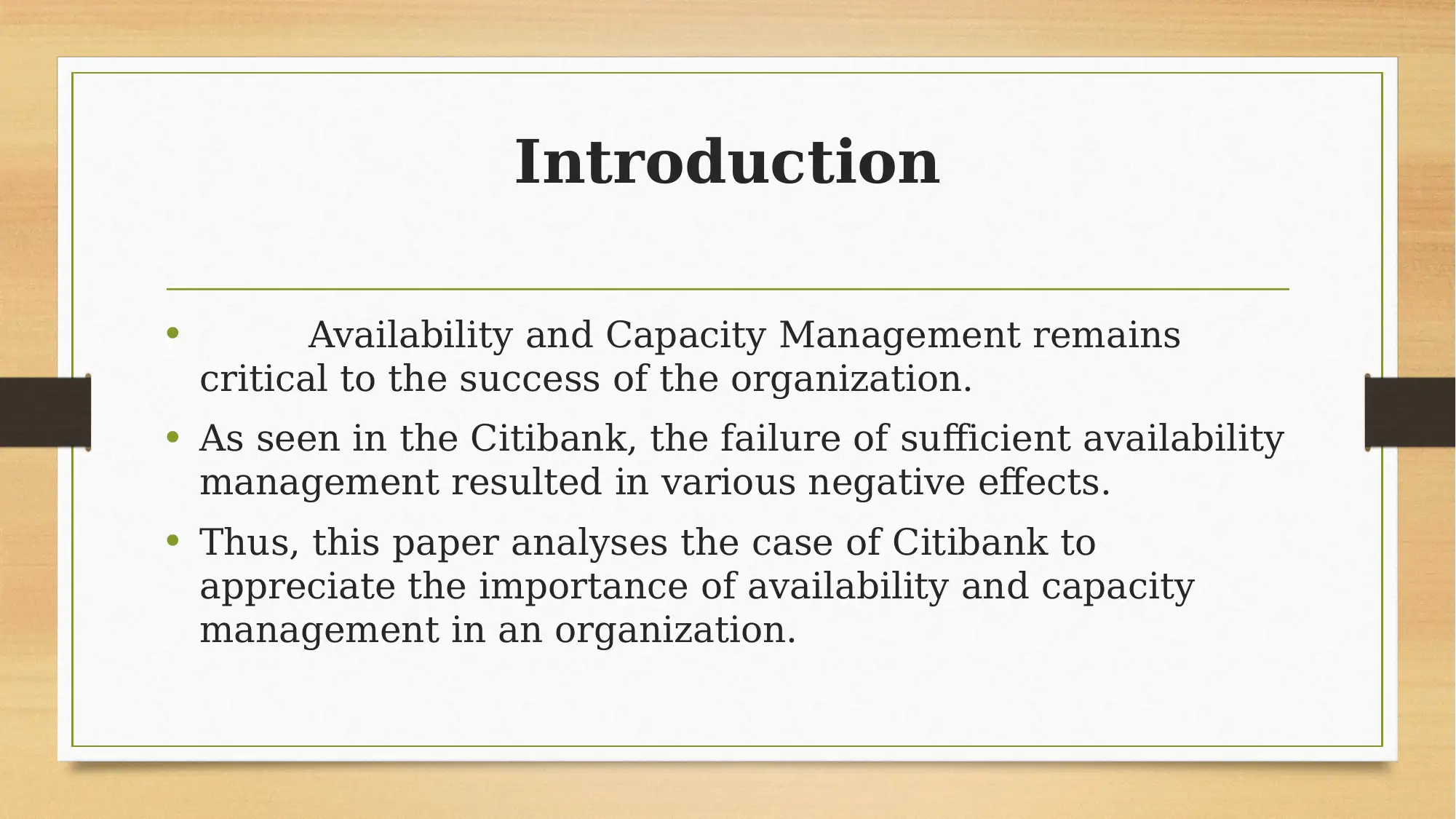
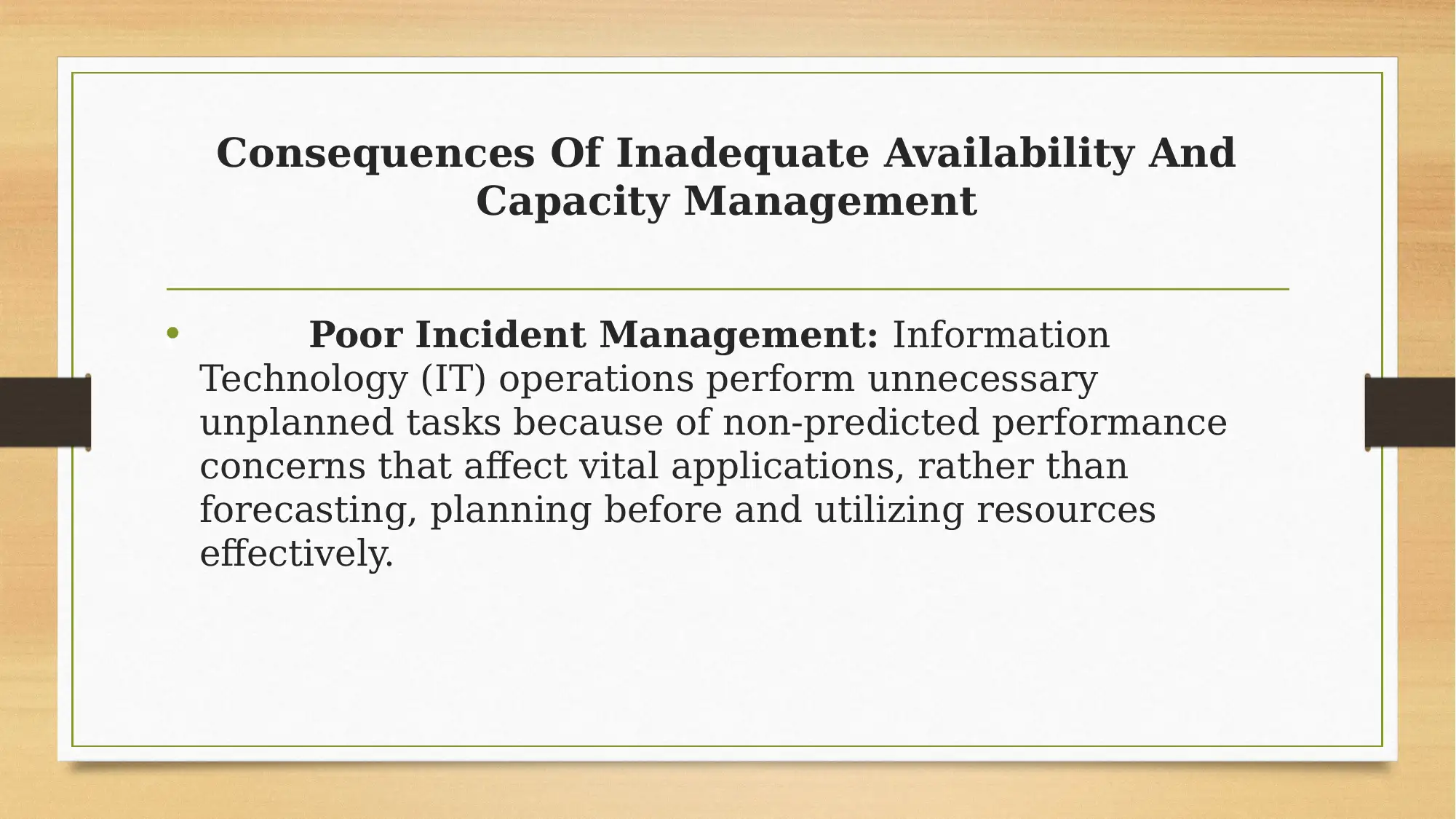

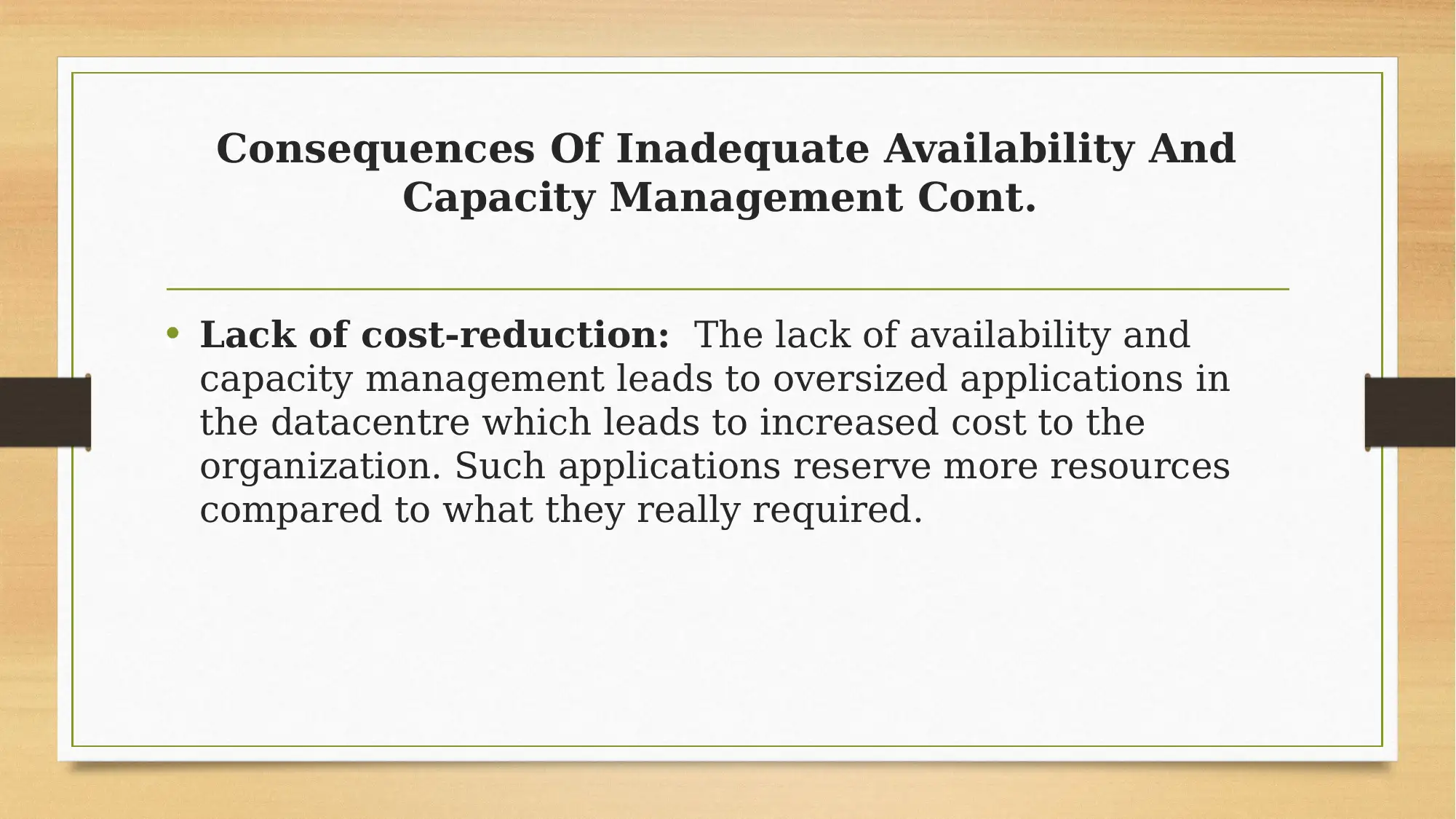
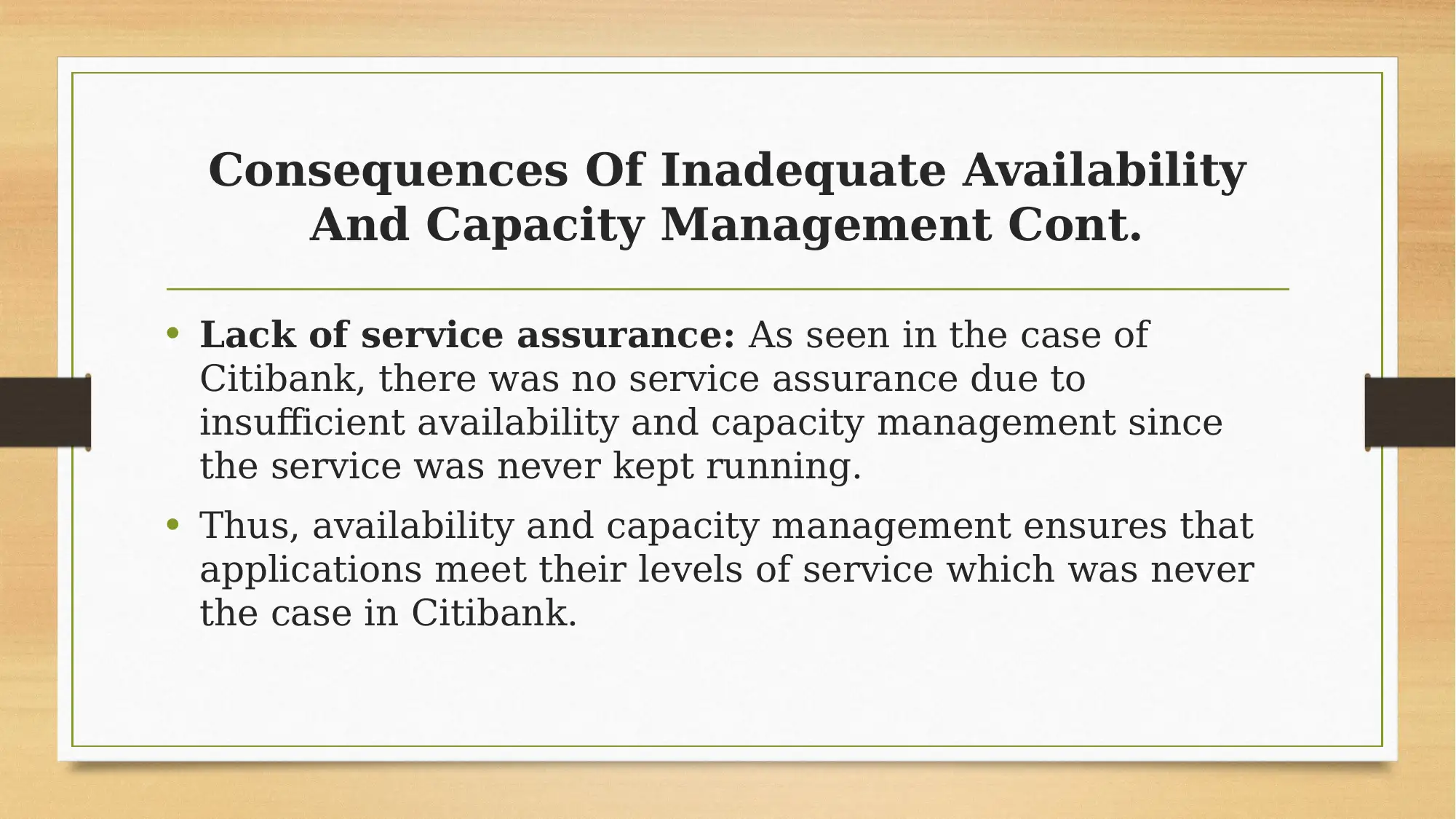
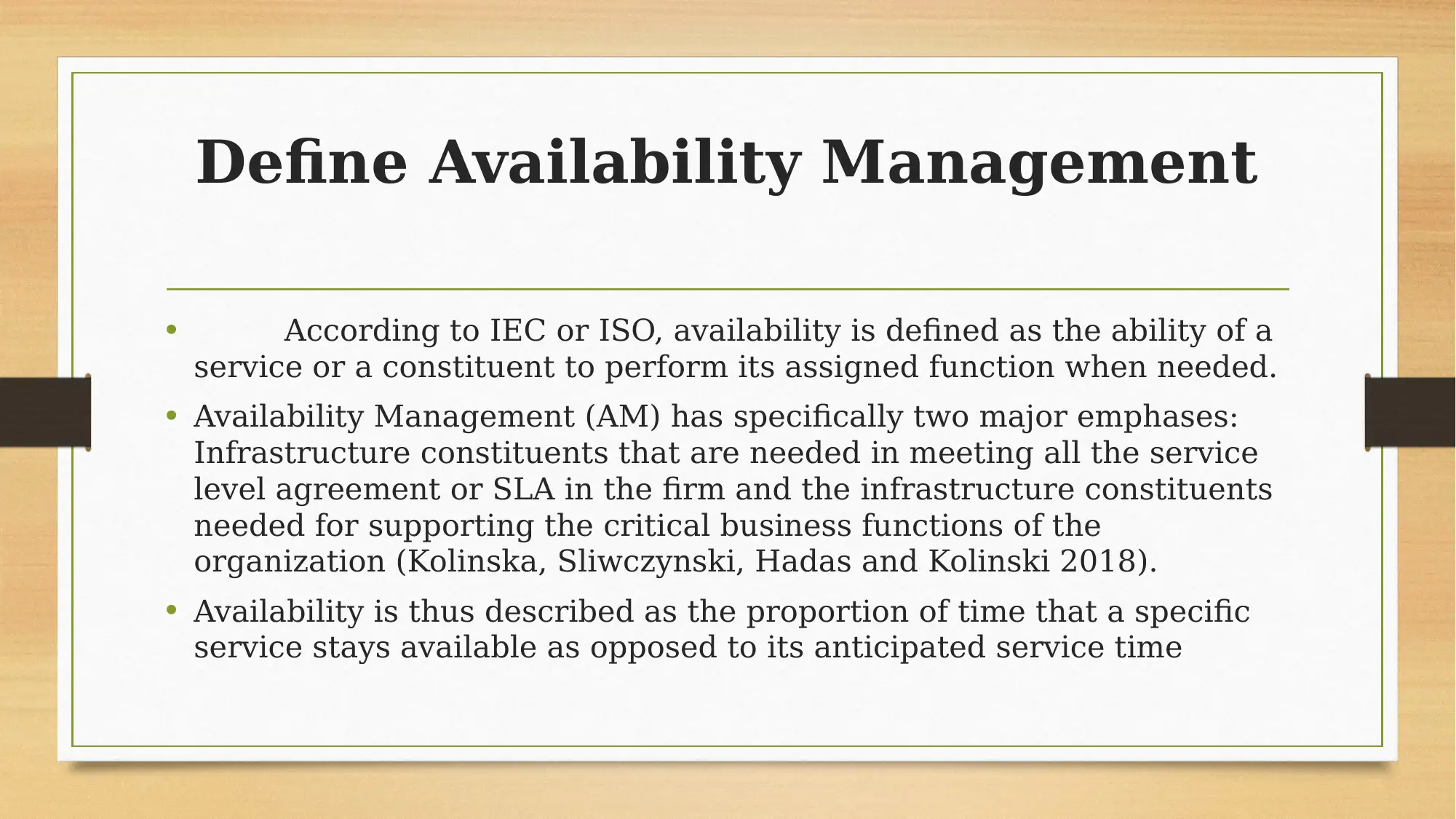




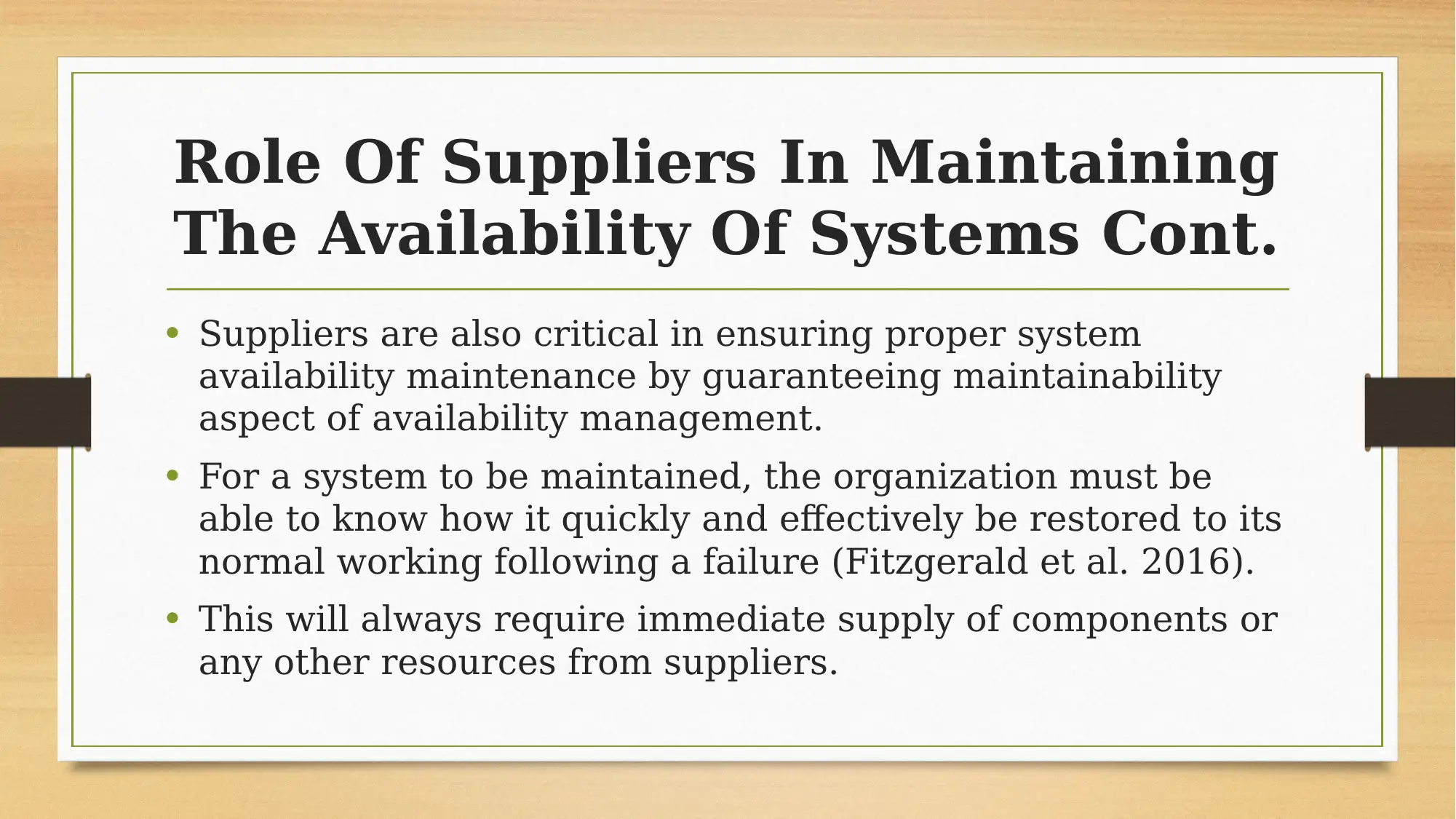
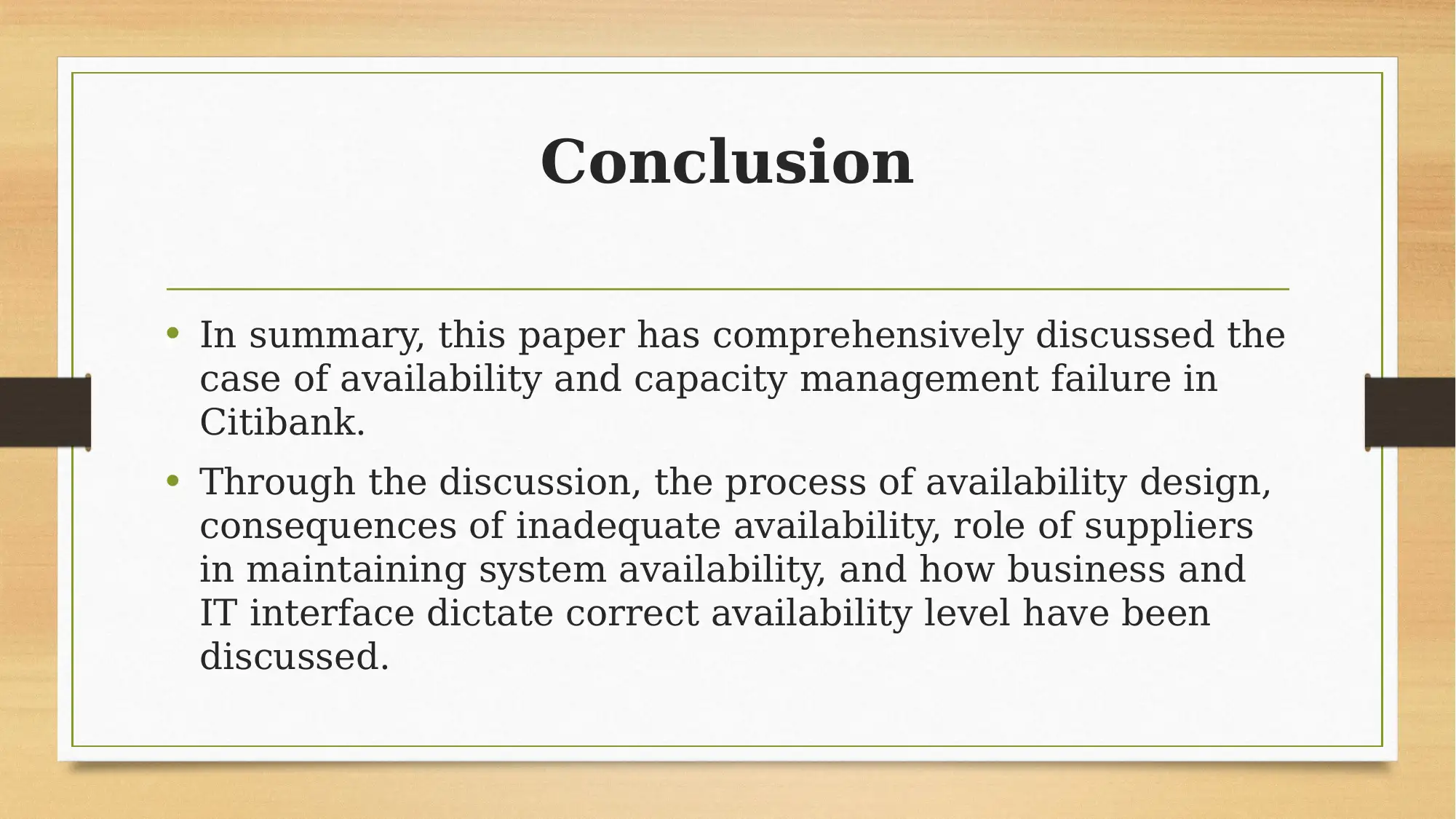




![[object Object]](/_next/static/media/star-bottom.7253800d.svg)